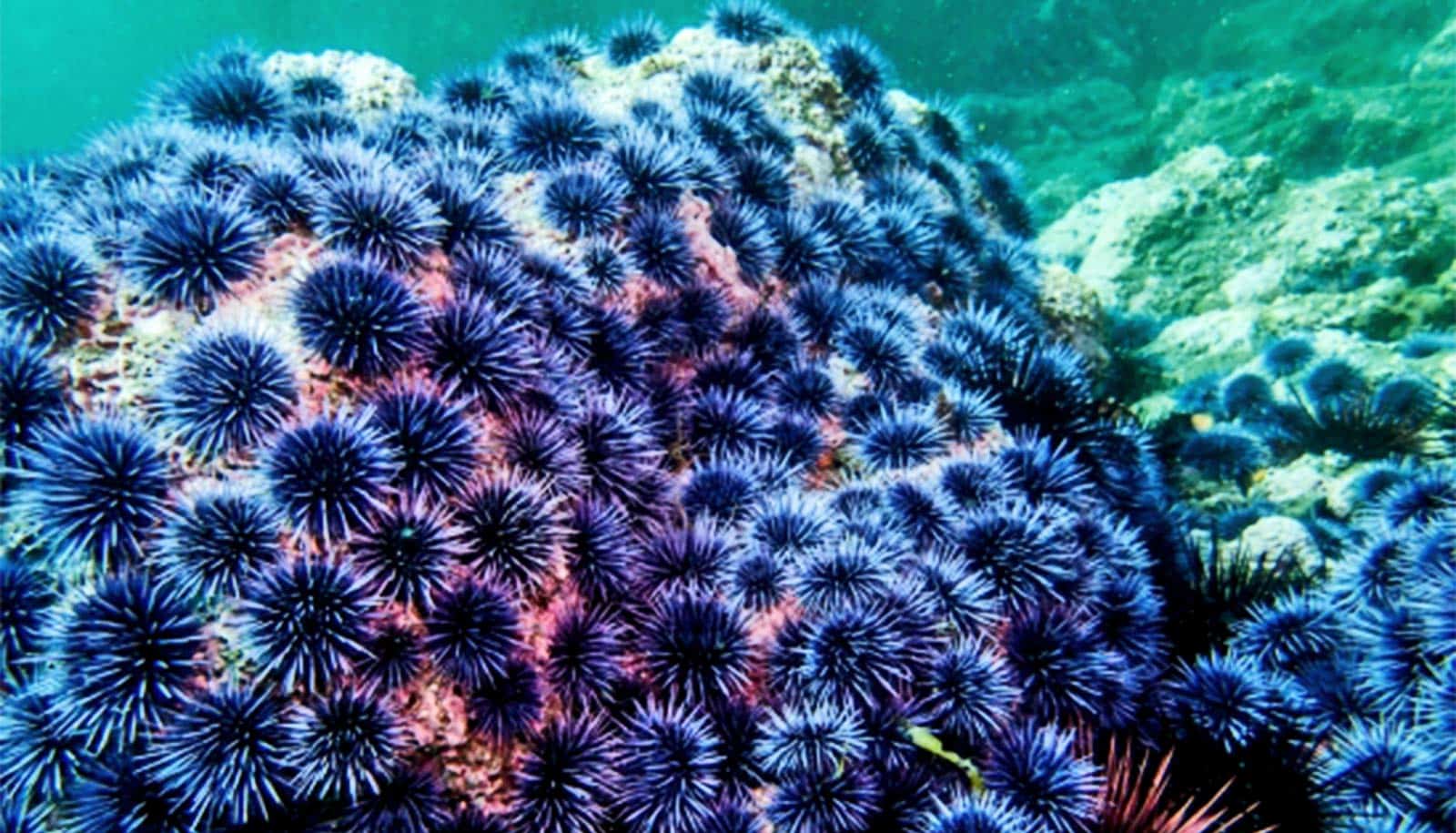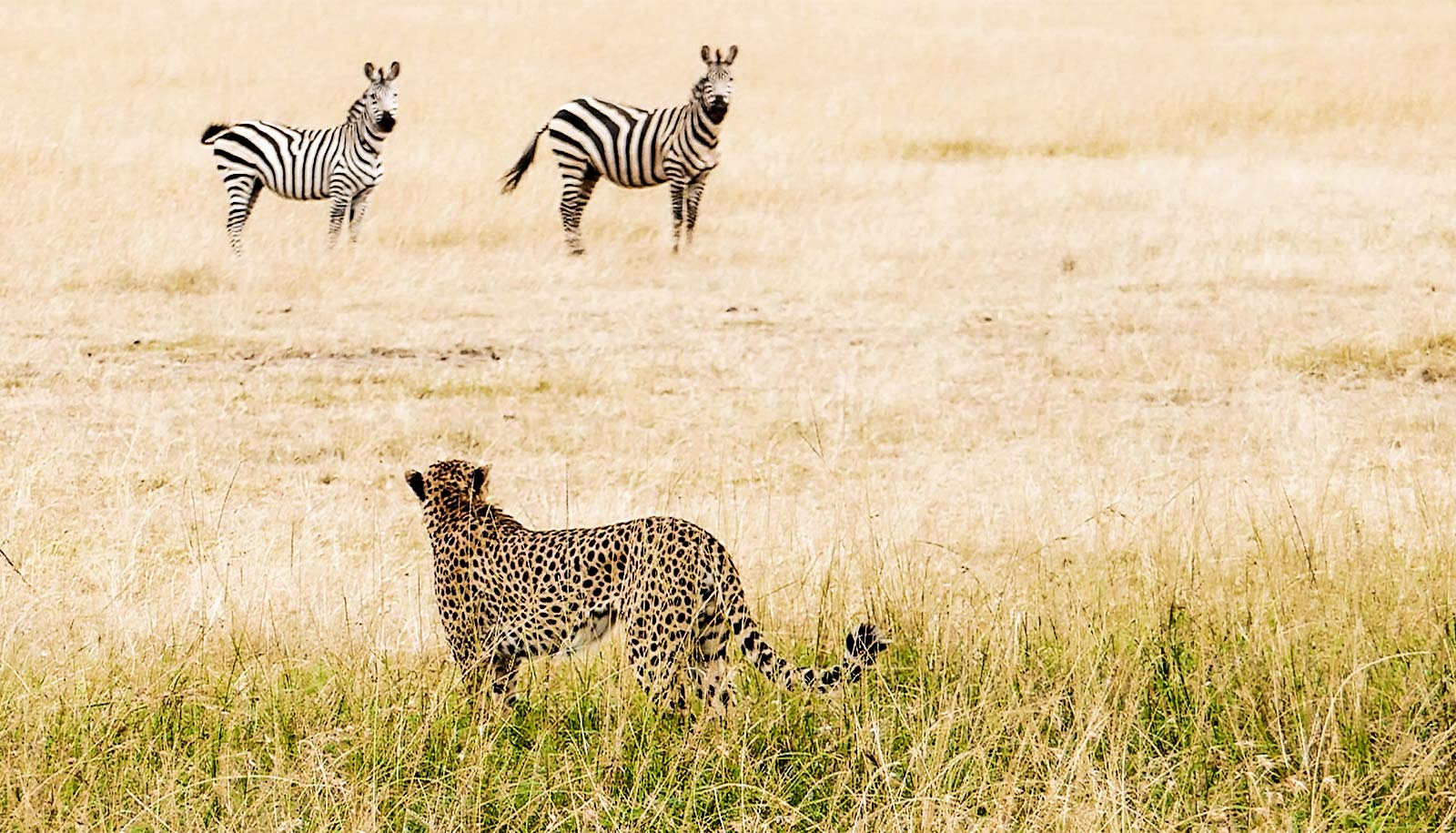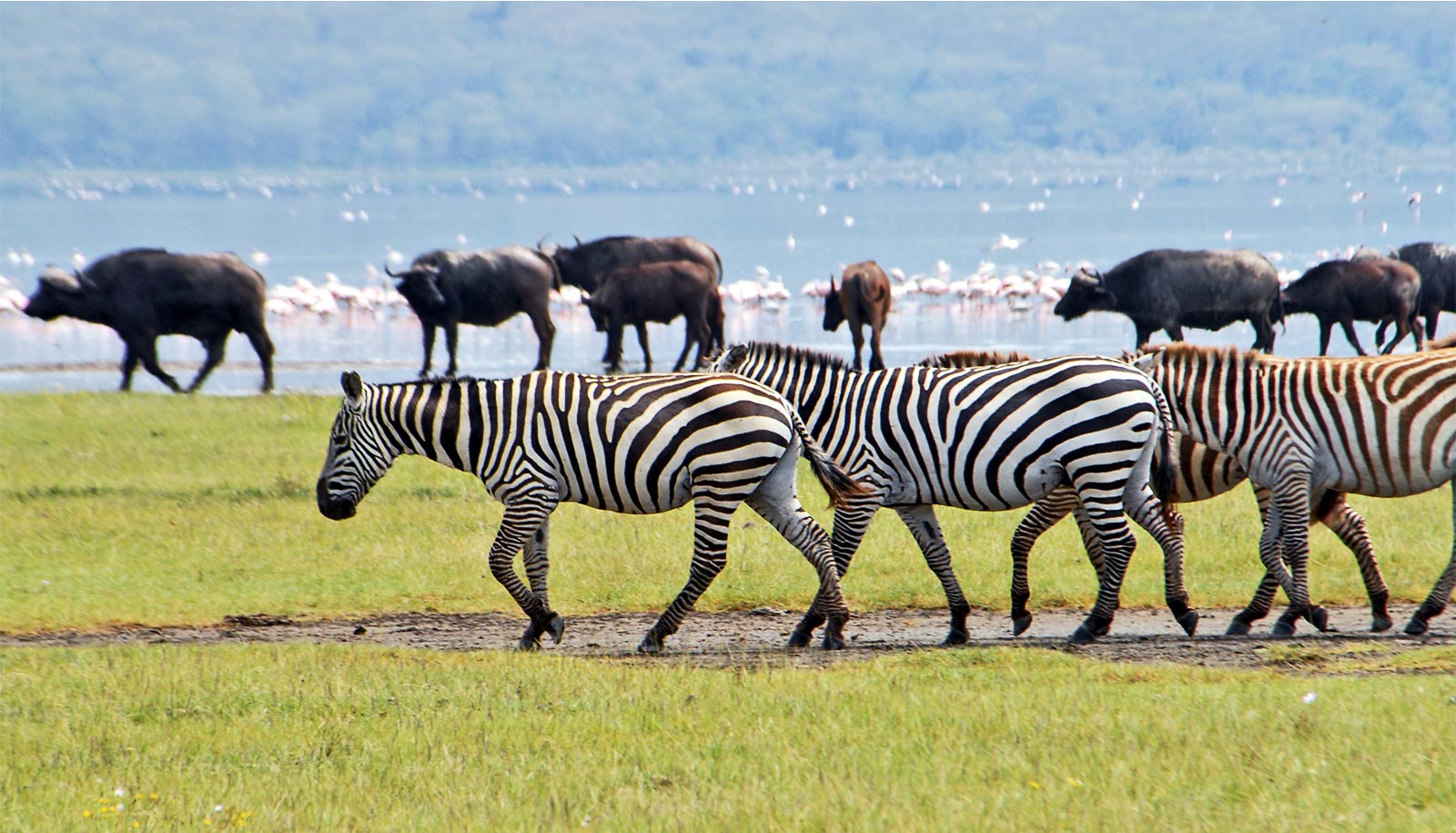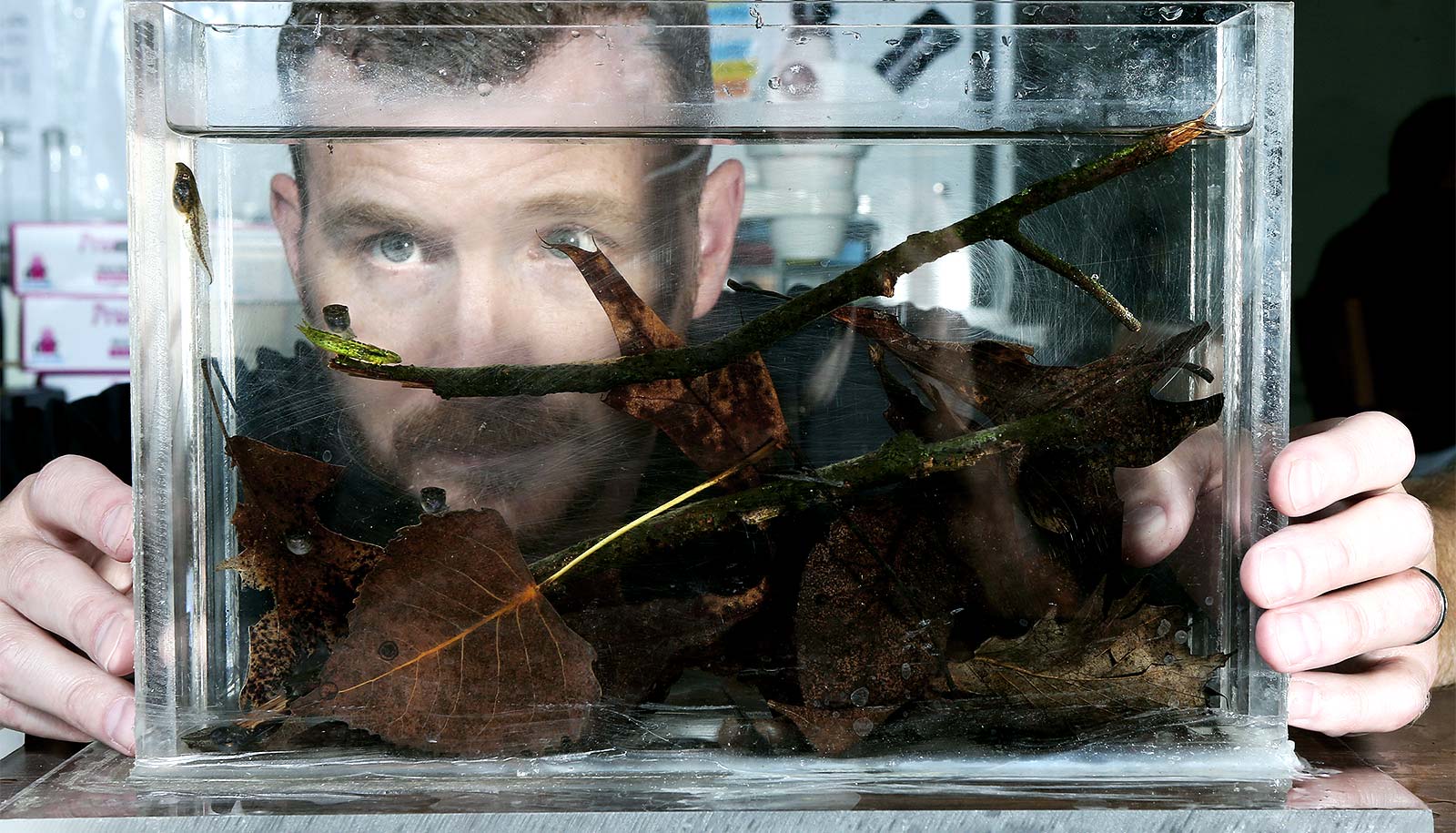Protecting redundancy in the food web helps maintain ecosystem resilience, researchers report.
In 2014, a disease of epidemic proportions gripped the West Coast of the US. You may not have noticed, though, unless you were underwater. Fueled by abnormally hot ocean temperatures, sea star wasting disease ravaged these echinoderms from Alaska to Mexico.
“When you have multiple different species all performing similar functions, if something catastrophic happens to one of them, those functions can still be maintained.”
The condition, which scientists still don’t fully understand, wiped out a significant marine predator, the sunflower star. The sunflower star was a particularly important predator of sea urchins, and since the sea star’s disappearance, the urchins it preyed upon have multiplied and laid waste to large swaths of kelp forest.
However, the spiny scourge seemed to have spared some areas, especially those where multiple urchin predators occurred, particularly within marine protected areas.
A team of marine biologists investigated what factors kept urchins in check in marine protected areas in the western Channel Islands. They found that a redundancy in urchin predators, and the protection afforded to them, seems to be responsible.
The results offer a new perspective on strategies to manage ecosystems for resilience and highlight an underappreciated benefit of marine reserves.
How losing a predator affects an ecosystem
“This sea star wasting disease was a very impactful and rapid event,” says coauthor Jennifer Caselle, a research biologist at the Marine Science Institute (MSI) and an adjunct faculty member in ecology, evolution, and marine biology at the University of California, Santa Barbara.
“We had abundant sea stars on our reefs, and within one year we had no sea stars.” The researchers haven’t seen a single sunflower star since 2014.
The sunflower star’s disappearance rippled through the entire kelp forest food web in what scientists call a trophic cascade. The team’s research indicated that even a few sunflower stars could effectively control an area’s urchin population, so without them, the populations exploded, and the kelp forests turned into barrens in many places in California.
And unfortunately, it’s easier for a kelp forest to become an urchin barren than for it to return to its original state.
“There are feedbacks that prevent it from shifting back,” says lead author Jake Eisaguirre, a recent graduate. “One of them could be that the abundant urchins on the ‘urchin barrens’ are starved and provide no nutrition to predators, so nothing wants to eat them.”
While the urchins mowed down vast tracts of kelp in some regions, especially in Northern California, the researchers noticed that kelp in marine protected areas off the Channel Islands was still relatively healthy. They suspected it may be related to the urchin’s other two predators in the region: the California sheephead and California spiny lobster.
Both of these species occur primarily in Southern California, and humans fish both heavily. “We thought that the protection of these other predators, even though they weren’t highly abundant in the western part of the Channel, may still have helped to compensate for the loss of the sunflower star,” says coauthor Katie Davis, a research scientist at MSI.
The patchwork layout of marine protected areas around the Channel Islands provided an ideal setup to test the effect marine reserves had on sea urchin predators, and accordingly, the urchins themselves. Adjacent areas are virtually identical except for their status as open or closed to fishing. What’s more, the research group has been collecting data in the area for more than 20 years under the Partnership for Interdisciplinary Studies of Coastal Oceans (PISCO), a long-term ecological project.
The team looked at data spanning several years before and after the onset of sea star wasting disease, examining how the assemblage of urchin predators changed. They used statistical models to investigate how different variables—like the size and abundance of the three predators, protected status of different sites and sea surface temperature — might have affected sea urchin populations.
These models suggested that not only the abundance, but also the size of the remaining predators in the system were important.
In and outside marine reserves
Before the onset of the disease, the abundance of sunflower stars had the most pronounced effect on urchin populations. However, after the outbreak, the best predictors of urchin numbers were the abundance and size of the remaining predators. And, by comparing across a number of sites, the researchers found that predators were more abundant and larger within protected areas.
The scientists concluded that the marine protected areas released the predators from fishing pressures, so they were able to effectively fill the void left after the sunflower stars died off. Outside the protected areas, where the predators are smaller and less abundant, they were less able to compensate for the loss of the sea stars. This is one of the first studies showing that marine protected areas can confer ecosystem resilience by ensuring the protection of critical species functions.
“When you have multiple different species all performing similar functions, if something catastrophic happens to one of them, those functions can still be maintained,” explains Caselle. In this case the function was predation, but the concept applies more broadly.
The state of affairs in Northern California supported the team’s conclusion. The ocean north of San Francisco is too cold for sheephead and lobsters, and the otters that are well established on the Central Coast haven’t been able to get a foothold north of the bay. As a result, the urchin population grew relatively unchecked once the sunflower star disappeared. The spiny hordes have since decimated the kelp forests of Northern California and the Pacific Northwest.
Big fish and sea urchins
The scientists also found that predators’ sizes made a big difference, especially for the sheephead.
“What surprised us the most was that even really small differences in sheephead size resulted in really big differences in how many urchins they could eat,” Caselle says. This is because bigger fish have bigger mouths that can crack bigger sea urchins.
One of the most common effects in marine reserves is that fish grow larger and become more numerous. Many studies have shown that this increases reproduction rates, since larger fish release disproportionately more eggs than smaller fish. However, this study is one of the first to highlight another, underappreciated effect: The larger fish are also able to better control urchins, eating more of them, as well as the larger, more fertile individuals.
“And that’s important because even small differences in fishing pressure can result in those size class differences for the sheephead,” Caselle adds.
“We are moving into a situation now where resource managers and resource users are having serious conversations about active restoration of kelp forests and other habitats being altered by climate change. Restoration may be the only option if we want kelp forests to retain their functions and their diversity,” she continues.
Fortunately, these findings show that we may be able to manage ecosystems for resilience to environmental changes by protecting multiple species that provide critical functions and recognizing that redundancy is important.
In the future, the team wants to investigate the feedback cycles at work, especially those involving sheephead, with an eye toward how these insights can be leveraged for ecosystem restoration. They will also continue their long-term monitoring with a special focus on understanding the effectiveness of marine protected areas and how they confer resilience to climate change.
The study appears in the journal Ecology.
Source: UC Santa Barbara



